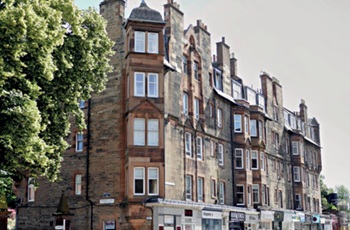Dew point
Air will generally include moisture in the form of water vapour.
Relative humidity (RH) is a measure of the water vapour density of air compared to the water vapour density for saturated air at the same temperature and pressure (that is, the maximum amount of moisture that air can “hold” at that temperature and pressure). It is expressed as a percentage.
RH = (actual water vapour density / saturation water vapour density) x 100
When air cools, it is less able to “hold” moisture, that is, the saturation water vapour density falls, and so relative humidity rises. When the relative humidity reaches 100%, the air will be saturated. This is described as the ‘dew point’ temperature, or the ‘saturation temperature’. If the air continues to cool, moisture will begin to condense. Where this condensate forms on a surface, it can be described as ‘dew’, hence the term ‘dew point’.
Understanding this phenomena is important in the design and construction of new buildings, and in the assessment of existing buildings, as the formation of condensation can be damaging, can affect comfort and can be a hazard to health.
Surface condensation occurs where water condenses on the exposed internal surfaces of a building, such as ‘cold’ windows.
Interstitial condensation occurs when the dew point temperature is reached within the fabric of the building, either on the surfaces of components that make up the fabric, or sometimes within the components themselves.
Condensation can cause:
- Mould growth which is a cause of respiratory allergies.
- Mildew.
- Staining.
- Corrosion and decay of the building fabric.
- Frost damage
- Poor performance of insulation.
- Damage to equipment.
- Slip hazards.
Software is available to help calculate dew points, particularly in relation to interstitial condensation, the position of which within the building fabric is crucial if potential problems are to be avoided.
[edit] Related articles on Designing Buildings
- Cavity wall.
- Cold bridge.
- Condensation.
- Dehumidification.
- Deliquescence point.
- Diagnosing the causes of dampness (GR 5 revised).
- Dry-bulb temperature.
- Humidity.
- Insulation specification.
- Interstitial condensation.
- Moisture.
- Psychometric chart.
- Saturation.
- Sling psychrometer.
- Solid wall insulation.
- Thermal comfort.
- Thermal indices.
- Temperature.
- Understanding dampness.
- Water vapour.
- Wet-bulb temperature.
Featured articles and news
The history of building regulations
A story of belated action in response to crisis.
Moisture, fire safety and emerging trends in living walls
How wet is your wall?
Current policy explained and newly published consultation by the UK and Welsh Governments.
British architecture 1919–39. Book review.
Conservation of listed prefabs in Moseley.
Energy industry calls for urgent reform.
Heritage staff wellbeing at work survey.
A five minute introduction.
50th Golden anniversary ECA Edmundson apprentice award
Showcasing the very best electrotechnical and engineering services for half a century.
Welsh government consults on HRBs and reg changes
Seeking feedback on a new regulatory regime and a broad range of issues.
CIOB Client Guide (2nd edition) March 2025
Free download covering statutory dutyholder roles under the Building Safety Act and much more.
AI and automation in 3D modelling and spatial design
Can almost half of design development tasks be automated?
Minister quizzed, as responsibility transfers to MHCLG and BSR publishes new building control guidance.
UK environmental regulations reform 2025
Amid wider new approaches to ensure regulators and regulation support growth.
The maintenance challenge of tenements.
BSRIA Statutory Compliance Inspection Checklist
BG80/2025 now significantly updated to include requirements related to important changes in legislation.






















